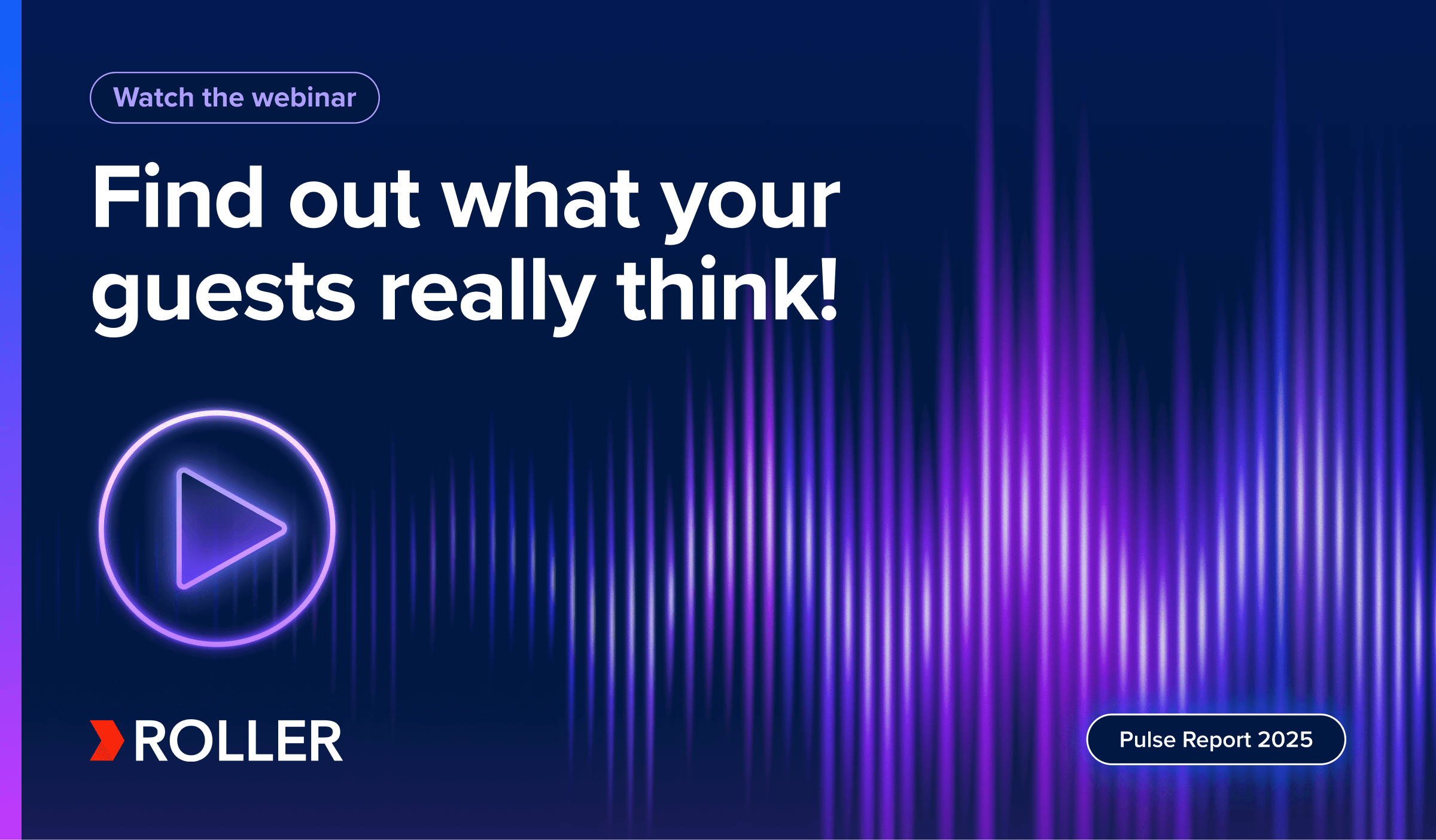Customer Effort Score (CES): Definition, Tips & Best Practices
-1.png?width=820&name=Customer%20effort%20score_Social(2_1)-1.png)
Owners and operators in the attractions industry are regularly striving to create incredible experiences for their guests that lead to long-lasting memories and impact their lives.
One area that is often overlooked, however, is customer effort. Are your guests jumping through hoops just to do business with you and partake in the experience? If there is too much effort, your guests will be less likely to come back, if they even visit.
This article can help you understand customer effort and use your Customer Effort Score, a low-effort experience metric developed by the Corporate Executive Board (CEB), to measure and reduce friction in your overall guest experience, ensuring that the right product or service is delivered to the right guest at the right time, while minimizing the amount of effort required from your guests.
What is CES (Customer Effort Score)?
A customer effort score (CES) measures how easy it is for guests to do business with you.
When it’s easy, it makes it more convenient for your guests, which leads to higher satisfaction and loyalty, which are fundamental tenets of the Guest Experience Flywheel.
However, too much effort in the experience creates friction, slowing down the flywheel, and the difficulty results in guest dissatisfaction and, ultimately, loss of their business. Customer effort and satisfaction are interconnected, as research has shown that the level of effort customers put into interacting with the business directly impacts their loyalty — so much so that 96% of consumers have reported being disloyal to a brand if they had difficulty solving a problem.
To find where the friction lies in the experience, measuring your Customer Effort Score (CES) can help you identify where your guests might have difficulty completing specific tasks required to visit your venue.
Examples of CES
Examples of customer effort for your venue might include:
- Locating your facility from the street (signage, indicators, ease of finding the address and parking)
- Ease of entering the venue from the parking lot
- The efficiency of your arrival process
- Completing waivers (if applicable)
- Wayfinding
- Locating restrooms
- Locating food and beverage
- Locating the exit upon departure
- Egress, particularly at closing time and higher traffic congestion
Why is CES important?
CES provides insights you can use to your competitive advantage
Customer effort can mean the difference between guests visiting you vs. your competitors and plays a factor in the guest’s overall satisfaction with your venue and brand.
Regularly measuring your CES can help you stay ahead of the competition regarding where friction in the experience lies because you will be able to identify and remedy friction points as soon as you see them arise.
CES provides insights you can use to your competitive advantage in terms of customer loyalty and customer satisfaction by identifying and addressing friction points that may lead to disloyal customers, ensuring an effortless experience for your guests.
CES shows you the guest experience through your guests' eyes
CES shows you the guest experience through your guests' eyes, allowing you to understand their perception of customer service and effortlessly gather customer feedback and information to make necessary improvements and deliver a seamless user experience that meets their expectations.
While you may regularly have your finger on the pulse of the guest experience, it’s important to remember that perception is reality. What might seem effortless to you might feel cumbersome to others, especially if it is not second nature to them.
For example, purchasing admission to an attraction has changed considerably over the years. Your guests today expect to have a seamless user experience, whether on desktop or mobile devices, and pay how they want to pay. If, for instance, you don’t offer Apple Pay, or your online checkout requires excessive scrolling, clicking, and page loading, the friction may lead to a higher perception of customer effort. By removing friction, you can reduce customer effort and see higher satisfaction.
Read this next: How to Choose a Payment Processing Solution
How to measure CES
Ask your guests directly
You can ask your guests directly through customer effort score surveys using a Likert scale, as it is considered the best way to gather unbiased feedback and determine the true level of customer effort, allowing you to make necessary improvements based on accurate data.
After your guests have key interactions with your business, you can also prompt them for real-time feedback indicating their ease of interaction.
For example, after a transaction is complete, a window can pop up asking:
How easy was it for you to purchase tickets today?
Note the neutral tone of the question that intentionally does not steer the guest in a particular direction. The questions, “Was it easy for you to purchase tickets today?” or “Was it hard for you to purchase tickets today?” would influence the guest’s answer before they could respond.
Remember: you aren’t seeking a favorable score; you are seeking the right score to help you improve. If you guide your guests toward always saying that the experience was effortless, you are only doing yourself a disservice.
Provide response options that are unambiguous
Remember that a broader range of options, such as 1-10, can create ambiguity in the responses because each guest will have their perception of what each number means.
A 7 for you might be a 6 for someone else, creating a wider range of response types and making it more challenging to understand your CES fully.
However, if your scale is 1-3, and your response options are a happy face, neutral face, and a sad face, this gives a quick and intuitive indicator of the guest experience.
What’s a good CES?
Your CES will depend on the scale of responses you offer and will differ if they are 1-3, 1-5, or 1-10. Therefore, rather than focusing on the actual score in this section, we will focus on what you should consider a good customer effort score.
There is good news and bad news when it comes to benchmarking. The bad news is that there is no industry-wide standard for what a good CES is considered to be.
The good news is that since you should regularly measure your CES, you can create a benchmark against yourself that you can use to make the best decisions. Commit to reviewing your CES in specific chunks — for instance, monthly, that allow you to measure improvement or decline in your score. If you view your score over time, it provides you with the benchmark that you need to make decisions.
As your CES score goes up, your NPS and GX Score should follow.
CES vs. NPS vs. GX Score
How does Customer Effort Score compare with other measurement tools, such as Net Promoter Score (NPS) and ROLLER’s GX Score?
Now that we’ve reviewed CES in detail, let’s review NPS and the GX Score and how they differ.
Net Promoter Score (NPS)
Historically seen as the holy grail of customer experience measure, the Net Promoter Score offers insights into the strength of word of mouth. NPS asks:
How likely are you to recommend [insert business name] to friends and family?
Respondents are presented with a range of 0-10. The score that they select segments into three groups. Those who respond with 0-6 are considered detractors and often require you to intervene to recover from potential service failures that occurred. Respondents indicating a 7 or 8 are passive, indicating a neutral perception of satisfaction, whereas your 9s and 10s are your promoters, who are your best advocates for influencing others to visit.
Calculating NPS is not as simple as taking the averages of all the scores. Instead, it is calculated as follows:
NPS = % of promoters - % of detractors
The outcome is the NPS score, which is presented as a number, not a percentage, because your NPS can be negative. The total range of NPS scores is -100 to 100, and any score above 0 is good because there is a higher percentage of promoters than detractors.
Guest Experience Score (GX Score)
The Guest Experience Score is a tool created by ROLLER that automatically collects and analyzes guest feedback Guests are prompted to complete a survey shortly after they visit the venue so that the feedback is captured while it’s still fresh.. Guests rate their experience with the venue on a scale of 1-5, and ROLLER aggregates these responses to provide a GX Score ranging between -100 to +100, depending on the proportion of positive vs negative responses. If you’re really interested, here’s exactly how it’s calculated.
The GX Score drills into specific aspects of the guest experience, such as service, safety, and value for money, allowing the guest to provide detailed feedback about what they enjoyed and what could be improved. If their initial response is a negative score, it offers several factors for the guest to select to pinpoint what contributed to their poor experience.
The GX Score can be filtered by product, category, staff member, and more, providing management with the intelligence they need to improve the guest experience based on friction points identified in the data. Operators can view how their GX Score compares against regional benchmarks to track how their venue compares to the market. It also can trigger immediate alerts if a negative score is received, so that operators can contact the guest before they post a negative review of a public review site.
How do they differ from CES?
Customer Effort Score is part of guest satisfaction. It can glean insights into where friction points may lie in the guest experience. One of the core components of guest satisfaction may indicate their overall guest experience. If a guest expresses significant effort in purchasing tickets but praises the staff for incredible service, the CES will reveal why the GX Score is lower than expected.
Customer Effort Score is a factor of the GX Score and NPS to be used in conjunction with these scores.
Customer Effort Score best practices
Implement a CES survey at critical points of the guest journey
Take a look at where customer effort is necessary, and seek to measure your CES in these critical points.
As a starting point, purchasing tickets, the arrival experience, and responses to guests’ requests are excellent points to prompt your guests for the CES survey. Remember to make it quick, easy, and not overwhelming to the guest when looking for their response.
Proactively identify where effort might be
While your CES will indicate where friction may lie, you shouldn’t wait for your scores to come in to start implementing systems to minimize effort. Take a proactive look at your entire guest journey, particularly in areas where friction may lie, and focus on removing the effort required to complete the task.
Regularly review your CES and the most significant friction points
As the data comes in, review your CES continually to see where customer effort leads to friction in the guest experience that will result in declining satisfaction.
Then, focus relentlessly on removing friction from all stages of the guest experience, using your CES as a guide for the most significant priorities to tackle.
Help your guests by helping yourself
When it comes to minimizing effort in the guest experience, ROLLER is here to help you eliminate friction from the most important tasks your guests complete: buying tickets, filling out waivers, arriving at your venue, submitting feedback, becoming members, and more.
We'd love to partner up and help increase your CES, NPS, and GX Score. Click here to schedule a demo today.
Related articles


2025 Pulse Report Webinar: Operators Unpack the Guest Insights

Indoor Playground Software Buyer’s Guide: How to Compare POS Systems and More
Enhance your guest experience
Get free education, tips and inspiration to help you run a successful venue.